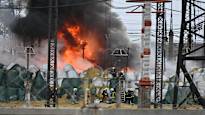Russia’s war in Ukraine has already produced more greenhouse gas emissions than the Netherlands produces in a year, the expert group estimates in its report.
The expert group Initiative on GHG accounting of war estimates in its recent report that Russia’s war in Ukraine has already produced more greenhouse gas emissions than the Netherlands produces in a year.
In the first two years, the war has produced 175 million tons of carbon dioxide equivalent. Carbon dioxide equivalent is a collective measure used to describe the climate impact of different greenhouse gases. According to the report, the same amount of emissions would be caused by, for example, bringing 90 million new gasoline cars into traffic.
According to the report, the carbon dioxide emissions of any major conflict have never been calculated before.
– We want to show the world what Russia is doing to our climate, states the leader of the research Lennard de Klerk for STT.
The social costs of the carbon dioxide emissions of the war started by Russia are calculated in the report to be around 30 billion euros.
Emissions from fuel in warfare
According to the report, the two biggest sources of emissions are warfare and reconstruction, which each account for about a third of the war’s emissions. Emissions also come from civil aviation, wildfires, energy infrastructure and refugees.
At the beginning of the war, reconstruction was emphasized in the calculations, as most of the destruction of the civil infrastructure occurred in the first weeks of the war. During the war, warfare has become an increasingly large cause of emissions, which includes, for example, the use of military equipment and the construction of defense lines. Fuel consumption causes the most emissions in warfare.
The emissions associated with the air traffic war are due to the fact that the routes have been extended to bypass the airspace of Ukraine and Russia. Meanwhile, the size and intensity of wildfires have grown significantly in Ukraine during the war.
The analysis of the war’s emissions is based on, among other things, official statistics, open source intelligence and scientific studies, but not all information is available as the war continues.
According to De Klerk, there are also sub-areas that have emission effects, but which have not yet been included in the calculations. Such are the soil degradation caused by mines and unexploded ordnance and the weakening of biodiversity.
Indirect emission effects due to the militarization of the world were not calculated in the report. However, De Klerk estimates that they are probably higher than the direct emissions of the war in Ukraine.
In Maiju Ylipie, STT
